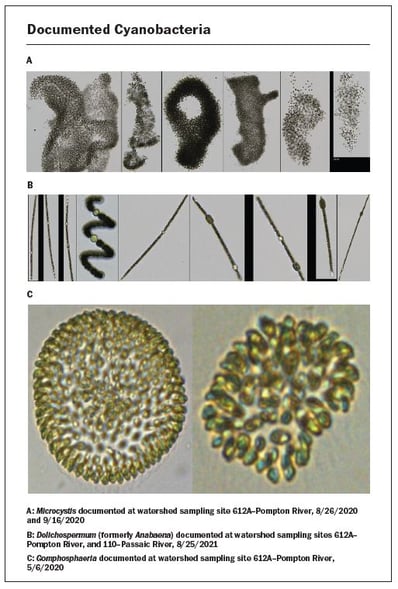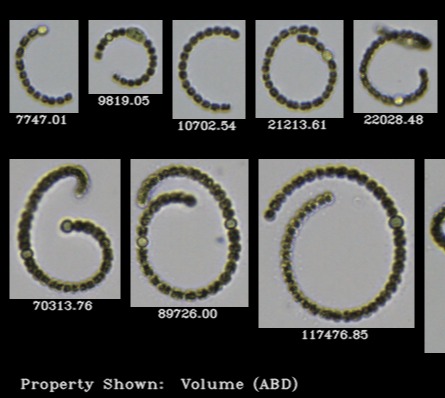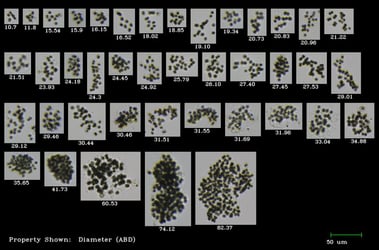Flow imaging microscopy (FIM) is a cutting-edge technology that combines the benefits of flow cytometry and microscopy to analyze and identify harmful algal blooms (HABs) in water bodies. This innovative approach via FlowCam provides real-time analysis and identification of potential cyanotoxin producers, assisting water utilities in understanding population dynamics and responding quickly to potential bloom indicators. The recent article in the Journal AWWA, "Flow Imaging Microscopy for Harmful Bloom Monitoring", showcases several case studies illustrating how FlowCam has been successfully integrated into harmful algal bloom monitoring programs for reservoir management and water treatment. By adopting FIM via FlowCam, utilities can better protect public health, reduce customer complaints, and ensure the safety and quality of drinking water.
"Since implementing FIM, Water Quality Laboratory (WQL) has increased algae/cyanobacteria monitoring to twice weekly; this is possible because the analysis time has been reduced to approximately 20 minutes from the 4 hours required using light microscopy. WQL is also able to quickly analyze additional samples on demand as issues arise."
- Austin Water, Austin, Texas.
FlowCam combines the high-content data of microscopy with the high throughput and statistical power of flow cytometry. The FlowCam Cyano instrument measures a wide range of particle sizes and rapidly produces quantifiable results. Traditional flow cytometry has limitations in processing larger organisms and providing detailed morphological data necessary for identification. FIM overcomes these limitations by capturing high-resolution particle images and analyzing particle properties such as size, area, biovolume, and fluorescence.
 One of the strengths of FlowCam is that it can classify organisms into different categories, including cyanobacteria, other algae and diatoms, and detritus. It can also capture fluorescence data to identify specific algal pigments, enabling monitoring a diverse group of organisms. FIM via FlowCam has been successfully implemented in water quality monitoring programs, such as the City of Wichita Falls, Texas, where it has significantly improved the monitoring and treatment of HABs. Other utilities, like the New Jersey Water System, the Passaic Valley Water Commission, and Austin Water, have also benefited from FlowCam in their proactive monitoring programs. It has reduced the analysis time and provided objective and quantitative data, allowing these utilities to make informed decisions promptly. By enhancing their ability to detect and mitigate HABs, these utilities have demonstrated reductions in customer complaints and continue to ensure drinking water safety.
One of the strengths of FlowCam is that it can classify organisms into different categories, including cyanobacteria, other algae and diatoms, and detritus. It can also capture fluorescence data to identify specific algal pigments, enabling monitoring a diverse group of organisms. FIM via FlowCam has been successfully implemented in water quality monitoring programs, such as the City of Wichita Falls, Texas, where it has significantly improved the monitoring and treatment of HABs. Other utilities, like the New Jersey Water System, the Passaic Valley Water Commission, and Austin Water, have also benefited from FlowCam in their proactive monitoring programs. It has reduced the analysis time and provided objective and quantitative data, allowing these utilities to make informed decisions promptly. By enhancing their ability to detect and mitigate HABs, these utilities have demonstrated reductions in customer complaints and continue to ensure drinking water safety.
Wichita Falls’ updated monitoring strategy includes monitoring source reservoirs using sondes, sensory analysis for Taste & Odor (T&O), algae/cyanobacteria identification and enumeration by FIM, T&O compound detection and quantification by gas chromatography-mass spectrometry, and cyanotoxin-producing gene detection by quantitative polymerase chain reaction (qPCR) and fluorometric planar wavelength assay.
These case studies demonstrate FlowCam's effectiveness in real-world utility management scenarios, demonstrating its potential as the cornerstone of an early warning system for reservoir monitoring. By quickly screening samples for toxin-producing cyanobacteria and Taste and odor-producing phytoplankton, utilities can promptly make informed decisions if treatment adjustments are required.
Read the full paper.











